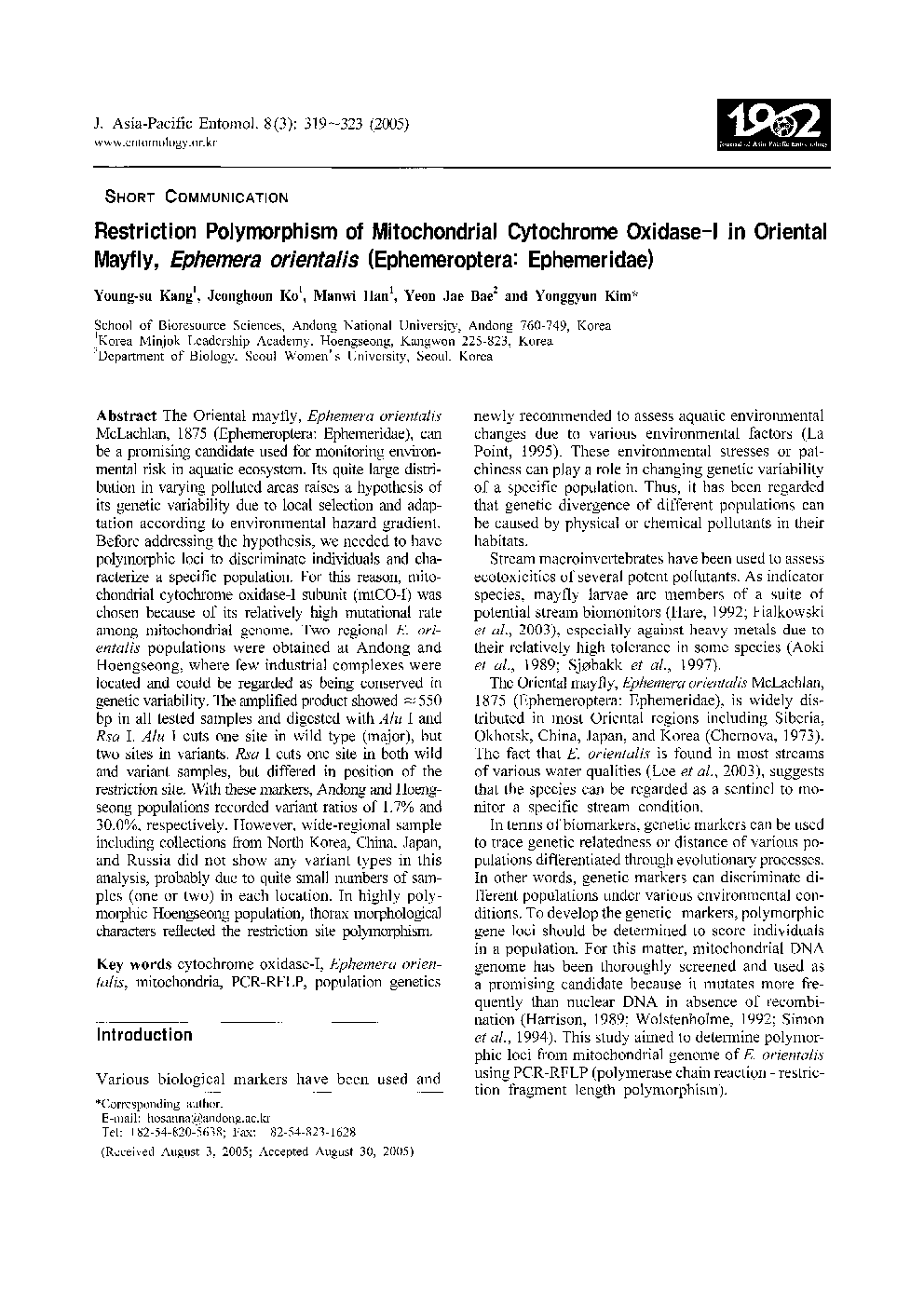| Article ID | Journal | Published Year | Pages | File Type |
|---|---|---|---|---|
| 9476752 | Journal of Asia-Pacific Entomology | 2005 | 5 Pages |
Abstract
The Oriental mayfly, Ephemera orientalis McLachlan, 1875 (Ephemeroptera: Ephemeridae), can be a promising candidate used for monitoring environmental risk in aquatic ecosystem. Its quite large distribution in varying polluted areas raises a hypothesis of its genetic variability due to local selection and adaptation according to environmental hazard gradient. Before addressing the hypothesis, we needed to have polymorphic loci to discriminate individuals and characterize a specific population. For this reason, mitochondrial cytochrome oxidase-I subunit (mtCO-I) was chosen because of its relatively high mutational rate among mitochondrial genome. Two regional E. orientalis populations were obtained at Andong and Hoengseong, where few industrial complexes were located and could be regarded as being conserved in genetic variability. The amplified product showed â 550 bp in all tested samples and digested with Alu I and Rsa I. Alu I cuts one site in wild type (major), but two sites in variants. Rsa I cuts one site in both wild and variant samples, but differed in position of the restriction site. With these markers, Andong and Hoengseong populations recorded variant ratios of 1.7% and 30.0%, respectively. However, wide-regional sample including collections from North Korea, China, Japan, and Russia did not show any variant types in this analysis, probably due to quite small numbers of samples (one or two) in each location. In highly polymorphic Hoengseong population, thorax morphological characters reflected the restriction site polymorphism.
Related Topics
Life Sciences
Agricultural and Biological Sciences
Animal Science and Zoology
Authors
Young-su Kang, Jeonghoon Ko, Manwi Han, Yeon Jae Bae, Yonggyun Kim,
